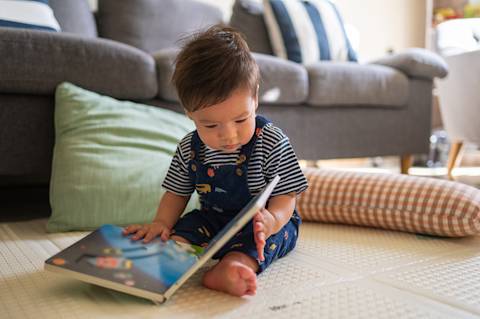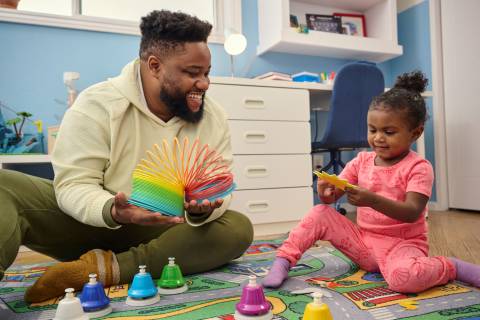Children’s brains absorb new information every day, especially when they’re playing. Combining fun and play with learning opportunities is a great way to support your child’s brain development and growth. These math games give you a chance to have fun together while helping your child learn age-appropriate math skills.

For toddlers and preschoolers, early math skills are all about counting, sorting, organizing, and recognizing patterns and shapes.
Around 1–2 years old, toddlers begin to understand what numbers mean and can often show how old they are by holding up the correct number of fingers. They also begin to understand comparisons, such as “more,” “less,” and “faster.” Many start recognizing simple shapes and some patterns.
By preschool age, around 3–4 years old, children begin identifying shapes in the real world with guidance and encouragement from caregivers or teachers. For example, you might tell them that the book is a rectangle or the plate is round. When you ask them later what shape those objects are, preschoolers can often remember the correct shapes. They often begin sorting things by similar shape, color, size, and other characteristics. Counting becomes more consistent, with many preschoolers able to count up to 20 without skipping numbers. They might also understand how to put simple puzzles together on their own.
By kindergarten, around age 5, children’s counting skills expand to be able to count on two hands and identify the larger of two numbers. They begin to understand concepts like symmetry, and they can recognize more complex patterns. Time becomes more clear, with many kindergarteners understanding the difference between morning and night. At this age, they can follow multistep instructions with words like “first,” “next,” and “last.”
You can adjust these fun math games to make them harder for your older child or easier for your younger child. To make them more difficult, create more complex patterns, or encourage your child to count higher.
Count Your Jumps: This game is sure to get the giggles going! In an open space like a larger room or a park, encourage your child to jump in place and count each of their jumps out loud. If they still have energy left (they probably do), you can ask them if they think they can beat their previous jump number. An extra bonus: Studies have shown that combining physical exercise and learning increases brain development and memory.
The Great Toy Sort: Not only is this a fun math game, but it can also be used to encourage your child to pick up their toys! To play, ask your child to sort their toys based on something they all have in common, but they can’t tell you what the toys have in common—you have to guess! Then, have them place those toys in a toy chest or line them up on the ground while you guess what their common characteristic is. To make this game more difficult, swap roles and have them guess how you’re sorting their toys.
Find Shapes Everywhere: The perfect game for riding in the car, Find Shapes Everywhere encourages your child to look for simple shapes like triangles, circles, squares, and rectangles in the objects all around them. If they need a little help, you can try pointing out an object like a road sign and ask them what shape they think that is. To increase the difficulty, challenge your child to look for a specific shape, like a circle, and to tell you when they see it.
Time’s Up—Freeze! For this game, tell your child they can dance, jump, sing, or do any safe activity they want until the timer goes off. When they hear the timer ding, they have to freeze in place until you release them. As you’re playing the game, give them different warnings, like “You have two seconds left!” or “Freezing in 10 seconds” so they can start to connect numbers with time.
This Then That: This game helps your child learn how to follow multistep instructions by looking for words like “first,” “second,” “next,” and “last.” To play, give your child a growing list of silly instructions. Start out with just one step, like “touch your nose.” When they do that, add another step. For example, tell them to first touch their nose and then hop on one foot. See how many steps you can keep adding!








